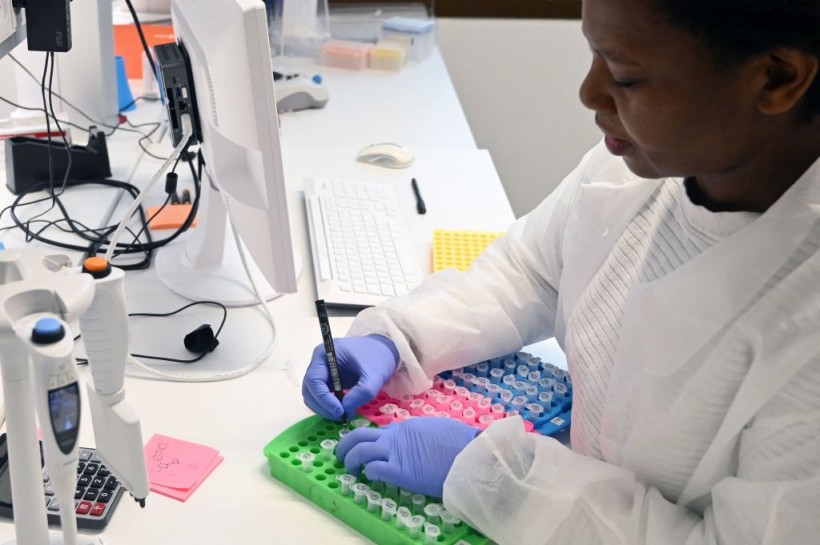The Cleveland Clinic was looking for stroke survivors who would be willing to participate in an experimental technique called Deep Brain Stimulation (DBS) to regain upper body mobility. A tiny cable is inserted into the cerebellum during the surgery to electrically activate the neurons.
Initially afraid, Nicholas, who had a stroke in 2018, opted to have the treatment done provided he could use his left arm and hand once again. The procedure seeks to improve upper body mobility.

(Photo: SERGEI GAPON/AFP via Getty Images)
An employee works at the laboratory of the Bispebjerg Hospital in Copenhagen on February 3, 2023.
Deep Brain Stimulation
Twelve stroke patients who underwent deep brain stimulation (DBS) were included in a Nature Medicine research. At first, each person's upper torso lacked strength on one side, making daily activities challenging.
Following therapy, they had a noticeable improvement in hand and arm movement, including the return of their culinary skills. One of the patients, Nicholas, attributes his sense of freedom to DBS.
The Cleveland Clinic's research team is looking at how Deep Brain Stimulation (DBS) could speed up stroke recovery.
The effectiveness of DBS, a method used to lessen Parkinson's tremors, in treating severe depression and other mental conditions is now being investigated. DBS entails implanting electrodes that produce gentle electrical pulses, much like a cardiac pacemaker.
Read Also: Smartphone App Helps Researchers to Detect Early Signs of Stroke
What a Stroke Does
Each year, about 15 million people have a stroke that results in damaged neurons close to the stroke site due to rapid bleeding or brain blockage.
Their rehabilitation often reaches a plateau approximately a year after the stroke, having an impact on their everyday life, and nearly half of the survivors have a chronic or permanent disability.
Because of its capacity to recover from trauma, the brain may replace damaged areas with healthy ones. Neuroscientist Kenneth Baker, who is a co-author of the article, claims that the goal of the research is to encourage functional rearrangement in the remaining parts of the cortex.
Stroke lowers neuron excitability, which affects how signals are sent and how the body is connected. Neuronal excitability returns after spontaneous stroke recovery. Baker's team used stimulation to boost the development of new connections and raise neuron excitability close to damaged regions.
Operations on the Brain
Researchers installed a chest gadget producing electrical impulses and implanted electrodes in the patient's brains. Patients had physical therapy after two months after healing. Then, as they maintained their physical treatment, electrical stimulation was put on for four to eight months.
Health Improvements
According to research, people with spinal cord injuries are more adept at doing commonplace actions like using a comb, picking up a cup, and turning on a light. The impairments were worse for the people who didn't experience substantial gains.
After receiving stimulation for a few months, Nicholas, one of the patients, saw a change, being able to shut his left hand and lift his left arm above his head, something he had previously been unable to accomplish.
Nicholas is pleased that it has helped him and that it has made yard maintenance and housework simpler.
This shows that there may be more time than previously believed to assist these people in regaining function. The most seriously handicapped individuals, however, did not benefit, indicating that there could be a cap on how much stimulation is beneficial.
Although the results are promising, additional research is required to identify the patients who would be suitable DBS candidates. A bigger randomized experiment is being planned by the researchers to more accurately assess its efficacy.
Related Article: Scientists Develop a Touchpad Device that Can Help Stroke Survivors Regain Their Senses










